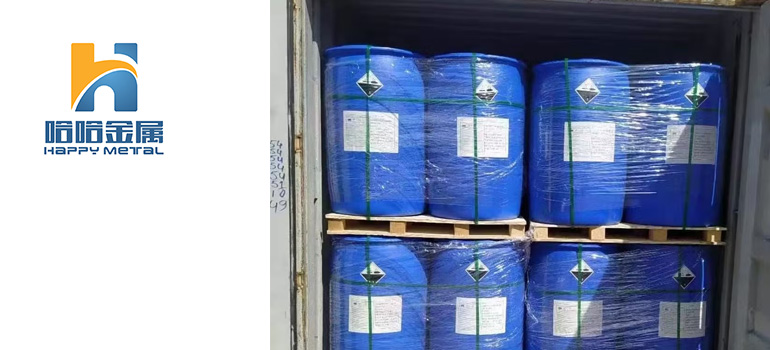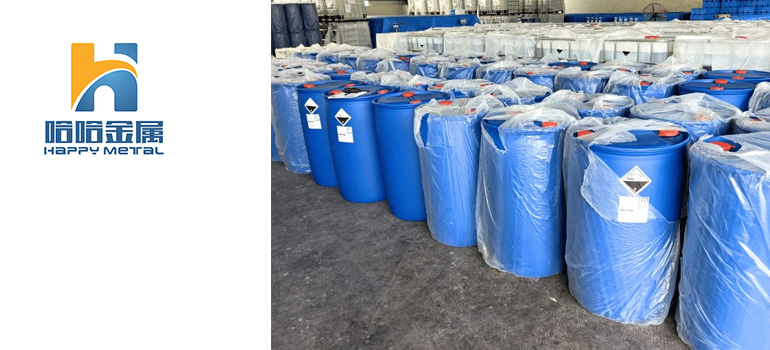Summary:
How Food Grade Phosphoric Acid Enhances Flavor and Shelf Life in Food Products?
What is Food Grade Phosphoric Acid?
Effects of Food Grade Phosphoric Acid on Flavor Enhancement
Uses of Food Grade Phosphoric Acid in Extending Shelf Life
Key Industries Benefiting from the Effects and Uses of Food Grade Phosphoric Acid
Phosphoric acid is a common ingredient used in a wide variety of food products, particularly in the food and beverage industry. As a mineral acid, food grade phosphoric acid is carefully regulated to ensure its safety and effectiveness when used in consumable items. But what exactly is food grade phosphoric acid, and how does it contribute to the taste and preservation of food?
What is Food Grade Phosphoric Acid?
Food grade phosphoric acid, a purified form of phosphoric acid, is a substance derived from phosphorus. Unlike industrial-grade phosphoric acid, which is used in fertilizers and other non-food applications, food grade phosphoric acid is highly refined and safe for human consumption. It typically appears as a clear, colorless liquid and is used in trace amounts in various food products. Its primary purpose in food manufacturing is to enhance flavor and extend the shelf life of certain products, making it an essential component in the industry.
Safety Considerations in Using Food Grade Phosphoric Acid
While phosphoric acid is safe for consumption in controlled quantities, it’s important to understand the safety regulations that govern its use in food. The Food and Drug Administration (FDA) and other regulatory bodies set strict guidelines for the permissible levels of phosphoric acid in food and beverages. These regulations ensure that the acid does not pose any harm to consumers, even when consumed over long periods. For manufacturers, it’s crucial to adhere to these guidelines to maintain both safety and product quality.
Common Applications in the Food Industry
Food grade phosphoric acid is used in a variety of applications across the food industry. One of its most prominent uses is in carbonated beverages, where it helps balance the acidity and enhance the overall flavor profile. It also plays a role in the preservation of foods, particularly in processed and canned goods, by preventing microbial growth. Additionally, phosphoric acid is used in cheese production, fruit juices, and even some processed snacks. Its versatility in food preservation and flavor enhancement makes it a valuable tool for food manufacturers worldwide.
Effects of Food Grade Phosphoric Acid on Flavor Enhancement

Food grade phosphoric acid is not just a preservative; it plays a pivotal role in shaping the taste experience of many food and beverage products. When added in controlled amounts, it can enhance flavors, balance acidity, and provide a distinctive sharpness that appeals to consumers. But how exactly does phosphoric acid work to improve the overall flavor profile of food? Let’s dive deeper into its effects.
How Phosphoric Acid Affects the Taste Profile of Beverages
One of the most well-known uses of food grade phosphoric acid is in carbonated beverages, such as sodas. In these drinks, phosphoric acid helps to introduce a tangy or slightly sour flavor, which can balance the sweetness of added sugars and syrups. This balance is crucial in making the beverage more palatable and refreshing. Without the acidity provided by phosphoric acid, sodas could taste overly sweet or flat. Its inclusion ensures a more complex, enjoyable flavor that appeals to a wide range of tastes.
The Role of Phosphoric Acid in Balancing Sourness and Sweetness
In many food products, achieving the perfect balance between sour and sweet can be tricky. Phosphoric acid acts as a flavor modifier that helps fine-tune this balance. For instance, in fruit juices or jams, the acid can enhance the natural tartness of fruits while counteracting overly sugary notes. This ability to adjust the flavor profile is particularly important in processed foods, where the natural taste of ingredients may not always be as vibrant or consistent. By adding phosphoric acid, manufacturers can create a more harmonious and balanced taste experience for consumers.
Examples of Food Products That Benefit from Phosphoric Acid
Aside from sodas and fruit juices, food grade phosphoric acid is used in a variety of other food products to enhance flavor. For example, it’s often found in processed cheeses, where it helps achieve a tangy, well-rounded taste. Additionally, phosphoric acid can be used in pickles and other fermented foods to preserve and amplify their sharp, acidic flavor. Even some candies and snacks use phosphoric acid to add a zesty kick that makes them stand out. In these cases, it’s the precise control of acidity that makes phosphoric acid such a valuable ingredient in flavor enhancement.
Uses of Food Grade Phosphoric Acid in Extending Shelf Life
In addition to its flavor-enhancing properties, food grade phosphoric acid plays a crucial role in extending the shelf life of various food products. By acting as a preservative, phosphoric acid helps inhibit spoilage, retain freshness, and maintain food safety for longer periods. Let’s explore how this versatile acid works to prolong the shelf life of foods and beverages.
Preservative Properties of Phosphoric Acid in Canned Foods
Phosphoric acid is often used in canned foods, where its primary function is to preserve the food’s integrity during long-term storage. The acid lowers the pH of the product, creating an environment that is less favorable for the growth of bacteria, mold, and yeast. This reduction in microbial activity helps prevent spoilage and allows food to maintain its taste, texture, and nutritional value for an extended period. For example, in canned vegetables, beans, or fruits, phosphoric acid can help retain the food’s color and flavor even after months or years on the shelf.
Phosphoric Acid’s Role in Preventing Microbial Growth
One of the main reasons phosphoric acid is effective in extending shelf life is its ability to inhibit the growth of microorganisms. When added to beverages or processed foods, phosphoric acid lowers the pH, making it more difficult for harmful bacteria, such as Salmonella or E. coli, to survive. In carbonated drinks, for example, the acidity not only enhances flavor but also contributes to the prevention of microbial contamination, which is critical for food safety. By reducing the risk of bacterial growth, phosphoric acid helps to ensure that food products remain safe for consumption over time.
How Phosphoric Acid Improves the Stability of Beverages
Phosphoric acid is also widely used in beverages, particularly soft drinks, to improve their stability and extend their shelf life. In addition to preserving the drink’s flavor, the acid helps prevent the growth of unwanted microorganisms and stabilizes the carbonation, which keeps the beverage fizzy for a longer period. This is especially important in packaged beverages, where the goal is to maintain product quality throughout the distribution and retail stages. The use of food grade phosphoric acid ensures that these drinks remain fresh and safe to drink, even when stored for extended periods.
Key Industries Benefiting from the Effects and Uses of Food Grade Phosphoric Acid
Food grade phosphoric acid is a versatile ingredient that has a significant impact on various industries, especially within the food and beverage sector. Its unique properties make it an essential component in a wide range of applications, from flavor enhancement to preservation. Let’s explore some of the key industries that benefit most from the effects and uses of food grade phosphoric acid.
Beverage Industry: Carbonated Drinks and Their Reliance on Phosphoric Acid
The beverage industry, particularly the production of carbonated soft drinks, is one of the largest sectors benefiting from food grade phosphoric acid. In sodas, phosphoric acid is used to impart the signature tangy taste that balances the sweetness of sugar or high-fructose corn syrup. The acid also helps control the beverage’s pH, which is crucial for maintaining carbonation and extending shelf life. Without phosphoric acid, soft drinks could taste too sweet or lack the refreshing acidity that consumers expect. Additionally, its ability to act as a preservative in beverages helps ensure that these products remain safe and fresh throughout their distribution and retail journey.
Dairy and Processed Foods: How Phosphoric Acid Plays a Role
In the dairy and processed food industries, food grade phosphoric acid is used in several applications, most notably in cheese production. It helps to regulate acidity levels during the cheese-making process, improving both the texture and flavor of the final product. Phosphoric acid is also employed in processed foods like sauces, dressings, and canned soups to enhance flavor, preserve freshness, and extend shelf life. For example, in cream-based sauces, it can balance the pH to prevent spoilage and maintain a smooth, creamy consistency over time.
Packaged Foods: Extending Shelf Life with Phosphoric Acid
Packaged foods, from snacks to ready-to-eat meals, also take advantage of the benefits of food grade phosphoric acid. In this sector, the acid is used to preserve foods and enhance their flavors, especially in products that are intended for long-term storage. For example, phosphoric acid is often found in pickles, processed meats, and canned vegetables, where it helps maintain their crispness, taste, and safety. By lowering the pH of these products, phosphoric acid creates an environment that prevents the growth of harmful microorganisms and keeps the food safe for extended periods. It also prevents discoloration and off-flavors, ensuring the product remains appealing to consumers.
Other Industries: Pharmaceuticals and Cosmetics
Beyond food and beverages, food grade phosphoric acid finds uses in other industries, including pharmaceuticals and cosmetics. In pharmaceuticals, it is sometimes used in the formulation of effervescent tablets or as a pH regulator in certain liquid medications. In the cosmetics industry, phosphoric acid helps maintain the pH balance in products like shampoos, soaps, and lotions. Its versatility across multiple industries highlights its importance as a safe, effective ingredient.




